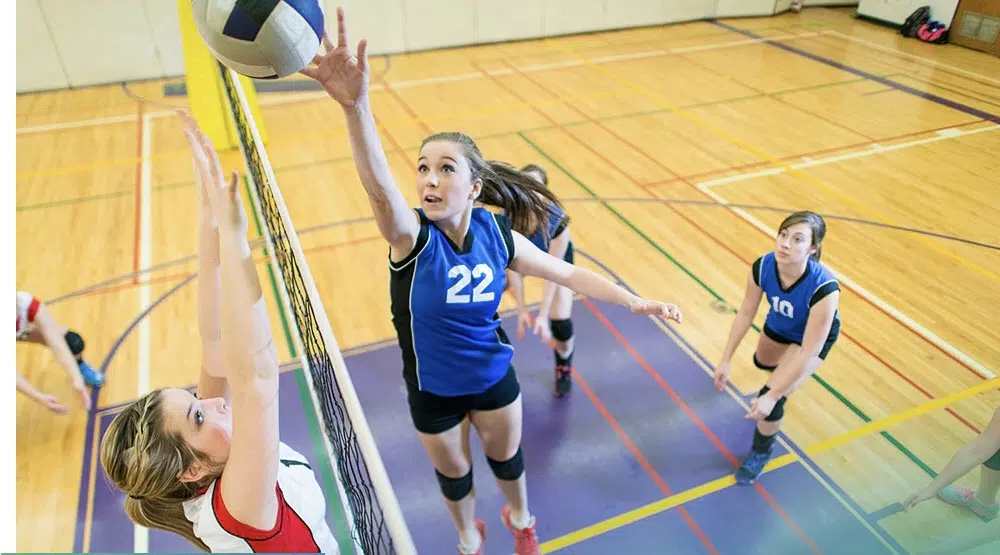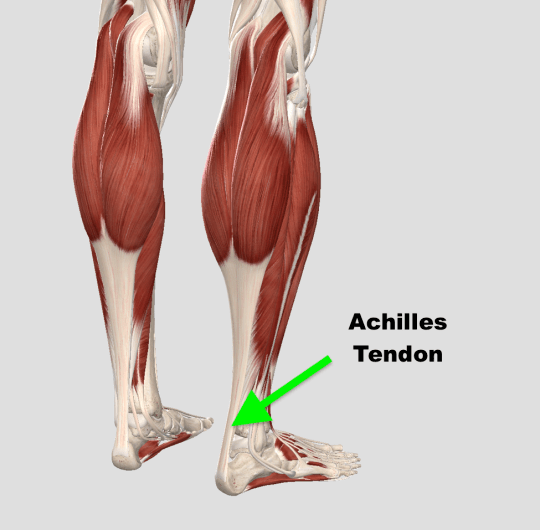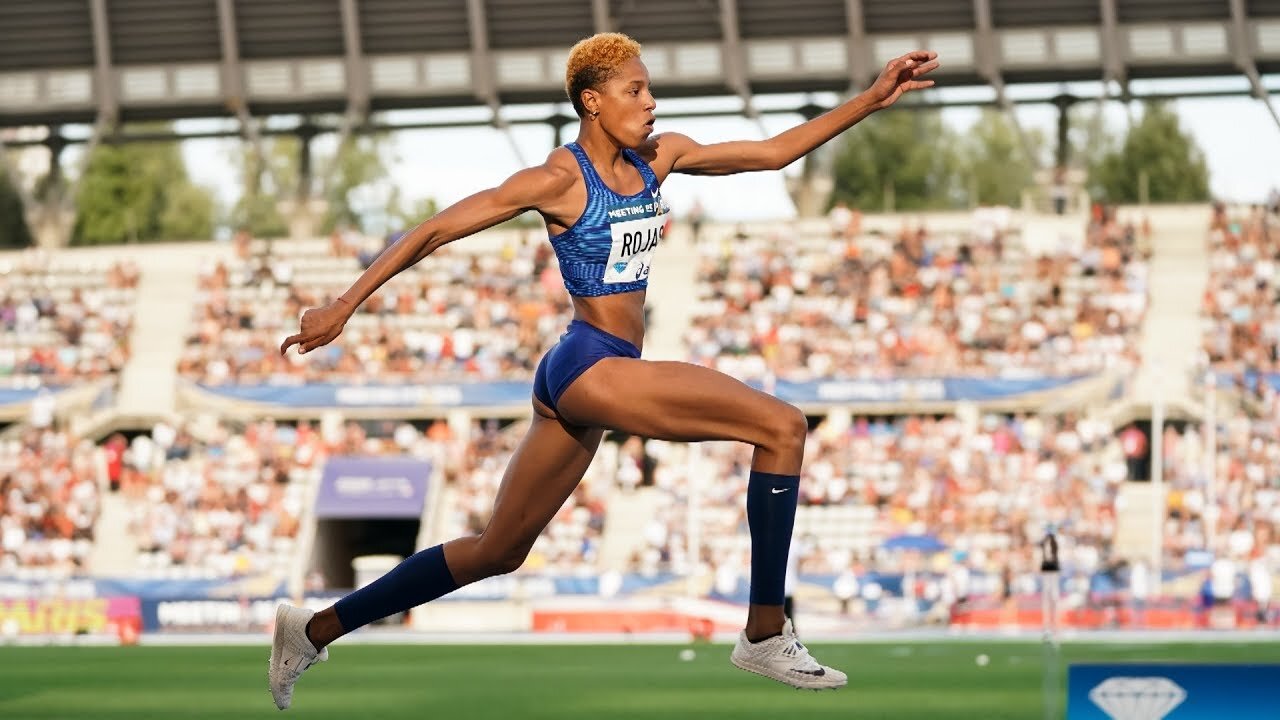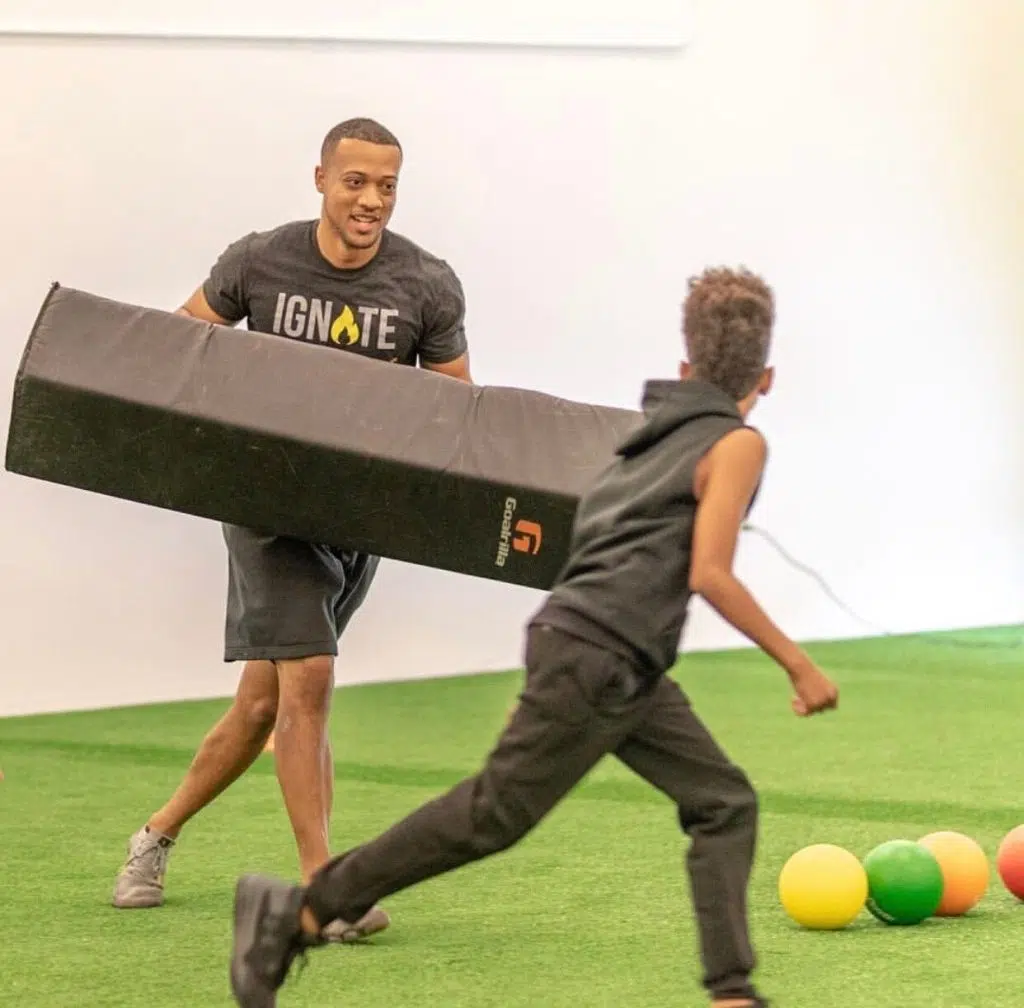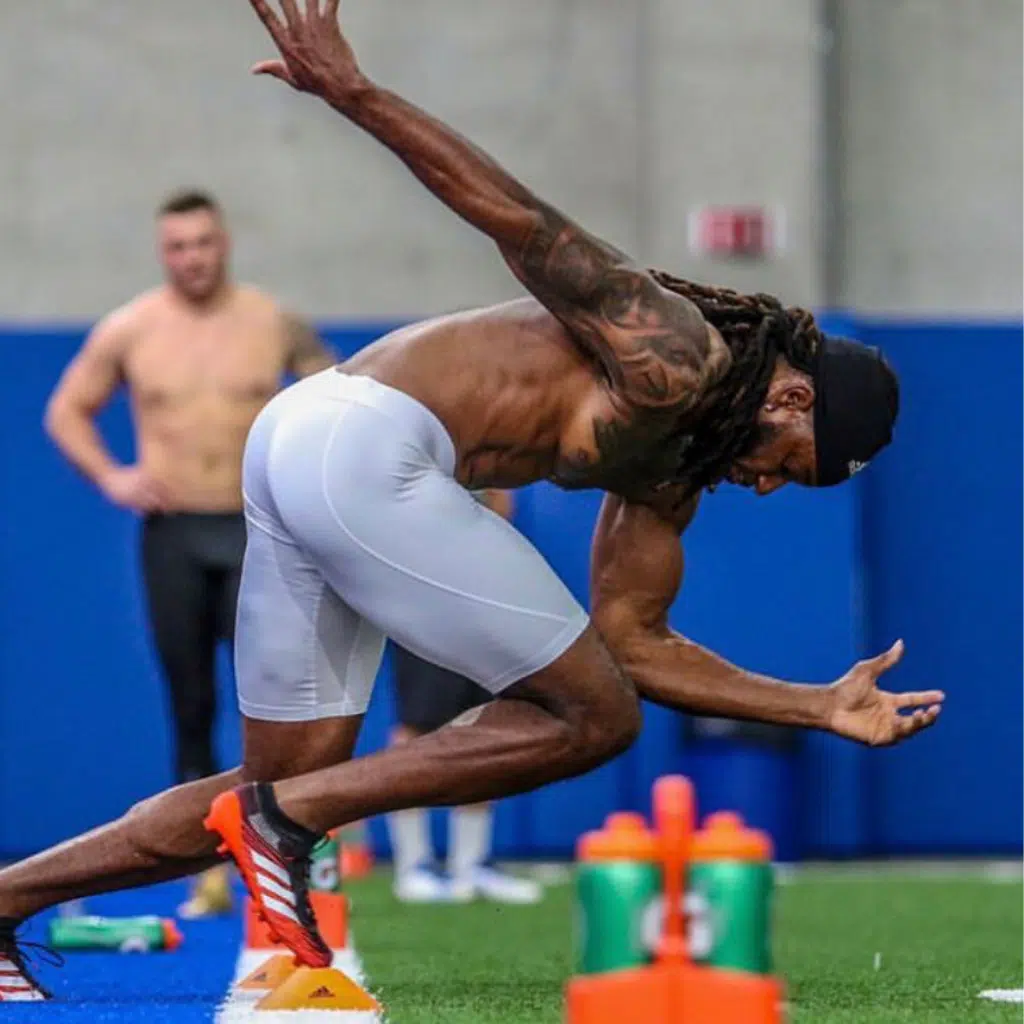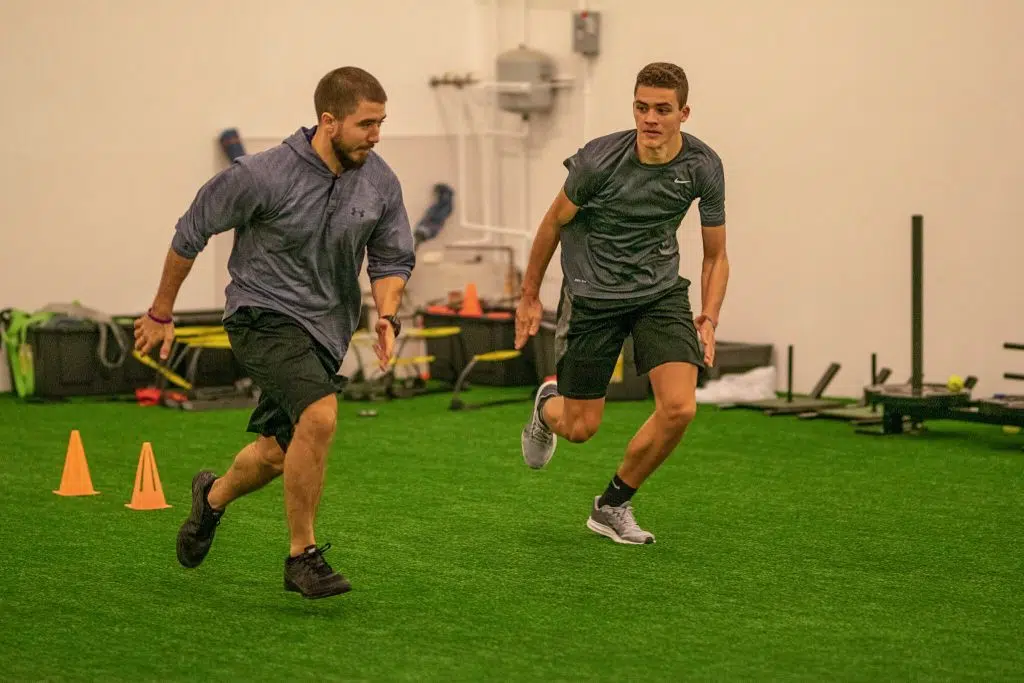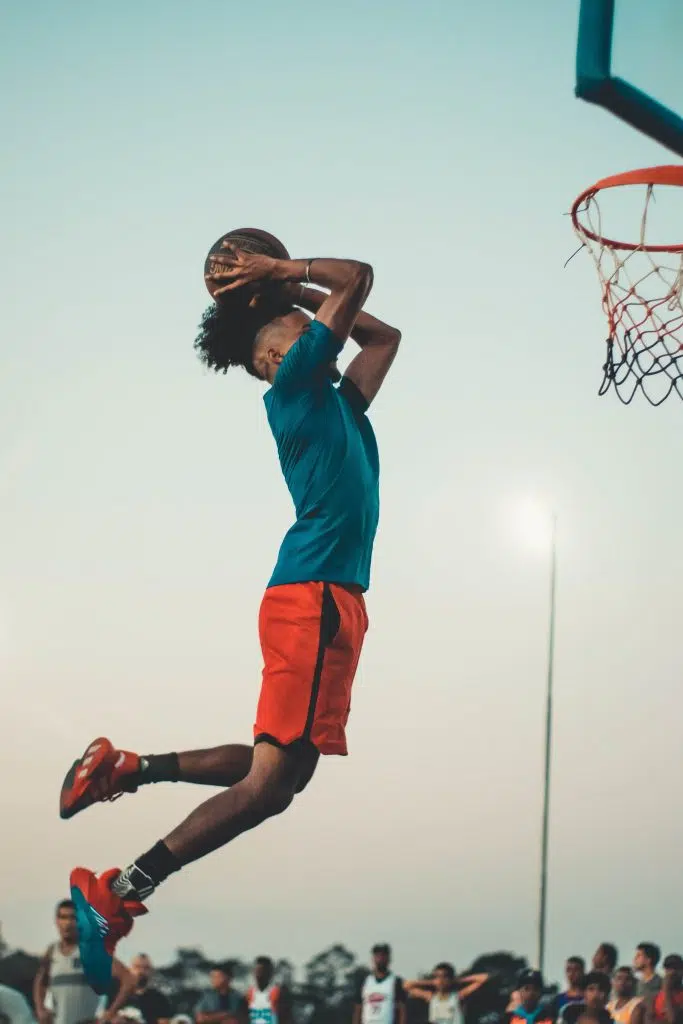A high vertical jump is one of the most desired and coveted physical traits for any athlete. Whether performing in a game, or simply filling out a recruiting profile, how high you can jump matters.
So then, the question for athletes is, “How can I increase my vertical?”
The question seems simple enough at first, but when you peel back the layers, it’s more complicated than that. One of the complications to that question is information. In 2019, the challenge for athletes isn’t access to information, it’s access to the RIGHT information.
A quick Google search of “How to Increase My Vertical” yields 305 million results. As you can see there is no shortage of info out there. But just like most information online these days, some of it is good and some of it is well….not.
The purpose of this blog post is to give you 3 PROVEN methods to increase your vertical jump. These are methods that we have used with many of our athletes, and ones that have yielded great success. Hopefully after this article this you will be on your way to creating your own success story.
** Note: We are hosting a free Jump Camp on Nov 16h. Look for the sign up button below.
Strengthen Your Tendons (Not just your muscles)
Strength is one of the most misunderstood terms in the strength and conditioning field. When most people think about strength, the first thing that comes to mind is lifting heavy weights and getting muscles bigger. And while weightlifting and hypertrophy play a role in jumping, it certainly does not play the only role.
Tendon strength and stiffness arguably play a more important role in jumping than muscles do. Tendons are thick, fibrous cords that connect muscle to bone and facilitate muscle contractions. The speed and the amplitude at which those tendons can facilitate those contractions, greatly effects jumping ability.
For example, the Achilles tendon stores elastic energy and helps facilitate quick, rapid movement. Think of of like pulling a rubber band out really fast and then letting go. The athletes that we commonly call “bouncy” have strong and stiff tendons.
Take a look at the video above of the famed, Masai warrior tribesmen jumping. By the way, these dudes are famous for hunting lions (seriously!!). Do you think those guys have ever been under a squat rack? Highly doubtful, yet they are still great jumpers.
The masai warrior immediately after landing
Notice the minimal change in the knee bend of each of the tribesmen. Their angles are very shallow and there is minimal change in their actual muscle length. They are not going into a deep squat position and struggling through a 3-second concentric contraction. This rapid and short movement is made possible mainly by a very strong and stiff Achilles tendons.
So what’s the best way to improve tendon strength?… Plyometrics.
Plyometric training is a training method developed by Russian scientist Dr. Yuri Verkoshansky. Verkoshansky is considered to be the godfather of plyometrics. The term plyometrics is thrown around all the time by the strength and conditioning field and is often misused. Plyometric training is not the same as jump over a 50 inch box. If you want to read why box jumps aren’t a great way to increase your vertical, click here.
In essence, plyometrics are a series of exercises that involve rapid stretching and contracting (shortening) of the muscles to increase power. Tendons help facilitate those contractions. Exercises such as depth jumps and hurdle hops are great exercises to increase tendon stiffness and improve jumping ability.
Improve Coordination (Jump Mastery)
Coordination is one of the most underrated traits that all great jumpers possess. I like to refer to the skill of jumping as Jump Mastery. The act of jumping is one, like any other skill, takes practice and timely cues coaching to master.
When it comes it jumping , timing and muscle firing patterns have a lot to do with how well the jump is executed. The timing of the muscle pattering (when certain muscle groups activate) has been studied extensively, and results have show that elite jumpers have different firing patterns than non-elite or novice jumpers.
A general rule of thumb is, the more movement there is preceding a jump, the more difficult it is to execute. For example, a standing vertical jump is easier to master than an approach jump. There is less movement involved, and the technique for executing it is typically learned quickly.
For example, football players commonly have some of the highest measured verticals in any sport with some measuring over 40 inches!! However, when asked to do an approach jump (especially directed at a target), they may struggle to execute it at a high level. The demand for running jumps within a game context is relatively low when compared to sports such as basketball and volleyball. Outside of a wide receiver or defensive back high pointing the ball, there just aren’t many scenarios where a football player has to run, jump, and catch a ball at its highest point. Simply put, you have to practice jumping to become good at jumping.
in our jumping programs, Instead of just limiting our athletes to one type of jump we try to expose them to a variety of jumps so they can be well-rounded jumpers and that their skills transfer more to a game setting. Jump training should be varied, and whenever possible, experiential in nature . At the end of the day, the best way to improve jump coordination is to jump!
Increase Force Relative to Body Weight
2019 Triple Jump Champion Yulimar Rosas
Imagine for a second jumping with a 20 pound weight vest on… Now imagine jumping with that weight vest removed. Which one feels better?
That sentence is a simplification of our next point. Force relative to body weight. The more force you can exert into the ground relative to your body weight, the higher you will jump. Take a look at the current male and female World Champion Triple Jump Champions. They are both pretty lean athletes and have a good body composition. Studies have shown that force relative to body weight is also a strong indicator of sprint speed.
Maintaining a lean physique is a critical factor in increasing jump height. However, that doesn’t mean you can’t gain muscle and still jump high. Just take a look at Zion Williamson. Clearly, Zion is a bit of a freak of nature, but Zion is still able to soar to incredible heights despite weighing 285 pounds!! One of the reasons Zion can still jump up so high is the incredible amount of force he can exert when he jumps. He overcomes his massive frame with an insane amount of force exerted into the ground.
Exercises like hex bar deadlifts and weighted jumps are great ways to improve force production. Combine that with a solid nutrition program, and you will be on your way to increasing your vertical in no time!
Even though this article has outlined some of the ways you can increase your vertical, there are numerous exercises and methods to choose from. Just any training program this article should serve as a guide, rather than a rule book. There are training methods that will work better for some than others. It’s key to individualize any program to the needs of the athlete.
On that note, I will leave with a quote from the late great Bruce Lee:
“Absorb what is useful, discard what is not, and add in what is uniquely your own”

